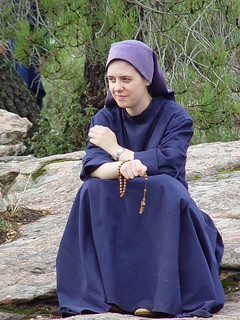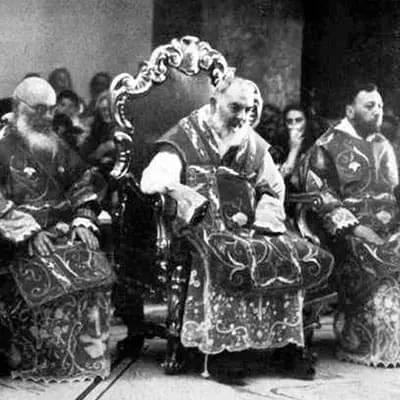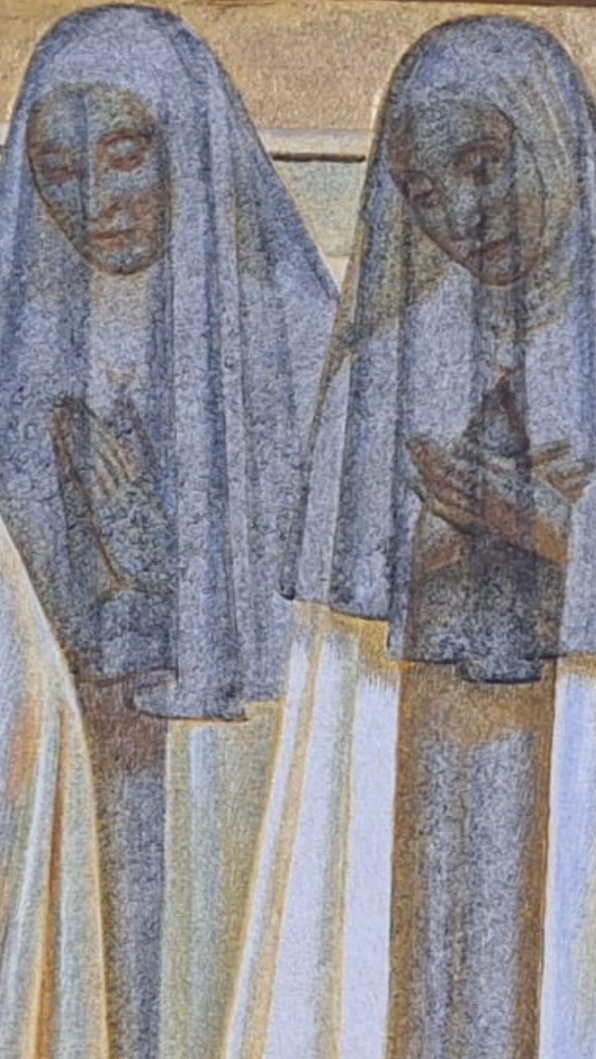Happy Birthday, Sister Clare Crockett
The Rock from Which You Were Hewn
One week from today, Cenacle Press will officially launch the Irish edition of The Rock from Which You Were Hewn. The book gives short biographies of 44 Irish men, women, and children who have not yet been canonized but have a reputation for holiness. The earliest story told is the story of the holy bishop, Blessed Thaddeus McCarthy (1455-1492). The most recent account is that of Sister Clare Crockett (1982-2016). When the book was first passed around at recreation to show the community, it was this account that the brothers turned to first and which first occupied our conversation. For the brothers have long been familiar with Sister Clare, and her life and intercession have had a profound impact on many of us. And it is not only we that are monks who know of her: a large proportion of the visitors to the monastery already know of her, and perhaps more than any other holy Irish person, those who visit the monastery delight to speak of her.
If she were still in this valley of tears, Sister Clare would today be turning 42, but her mortal life came to an end suddenly in an earthquake in 2016. She was 33, the age of Christ, and she seems to have suspected that she would end her pilgrim journey at that age.
Next year, on 12 January, her cause for canonization is to be opened.
Alone with Christ Alone

A few years ago, the community read Alone with Christ Alone, the biography of Sister Clare that was published in 2020, on 8 September (the anniversary of her vows). A number of the brothers had individually read it and had strongly recommended it to the community. It is a monastic custom to read during the meals since St Benedict says that reading should not be missing at mealtime (Chapter 38 of the Holy Rule), so we read this book as a community. Usually, when we read a book, it may spark a few conversations, but it is largely in the background. Many books are rarely if ever brought up once they are finished. It was different with this book. As we read it, it was a constant interest for conversation, and when it was over, we continued to talk about it. Months later, because we were still talking about it, the community received permission to watch her documentary, a truly special event, since you could almost count on one hand the number of films the community has watched during recreation in the last decade. A year later to the day, interest was still high and we watched the extended edition. But, while the brothers appreciated seeing Sister Clare, the general consensus seemed to be that the book gave a far better indication of her holiness.
One of the strongest points of the book is that it is both a biography of her life and a spiritual biography. The story of Sister Clare’s development, from the child who cared so much about the First Communion dress that she could not even remember receiving First Communion to the seventeen year old who was on a Holy Week retreat without having much of an idea about what Holy Week or the Eucharist was, to the thirty-three year old Religious Sister who, not knowing that a few hours later she would die in an earthquake, declared on 16 April, 2016: “I am not afraid of death. Why should I be afraid of death if it is the encounter with the One whom I’ve spent my entire life desiring to be with?”

One of the Monks summarised Sister Clare’s spiritual development saying that it started out with him being amused, and then she became impressive, and by the end of the book it was almost terrifying how strongly in love with Jesus and zealous for Him she was.
Her spiritual progression also acts as a combination road-map/springboard for examining one’s own spiritual progress. By following her life both exteriorly and interiorly simultaneously, the soul that reads can prayerfully discern where she is on her spiritual walk, and what she still has left to surrender to God.
Connections
I believe that all the Monks would agree that Sister Clare died in the odour of sanctity. Many of the monks would also agree that they have discovered special connections with her. One monk was able to remember actually being present for an episode of her life, and years later he had the pleasure of reading about that episode in the book. Another monk discovered that they shared a birthday. Another thought he felt her intercession strongly, first shortly after her death, in 2016, when she and the earthquake was being discussed at a community recreation, and, contrary to his usual practice, he felt a strong inclination to pray to her instead of for her, along with a strong sense that she was close to him. This same monk, when reading her biography, felt a strong urge to stop reading and to pray for someone who had been entrusted to his prayers on account of anorexia. He simply said to her: “Sister Clare, I entrust this person to you. She struggled with anorexia. Please intercede for her and help her.” He then read the next passage, and was surprised to read: “She helped many young women with more specific and complicated difficulties, such as anorexia. She had a firm belief in the power of and need for prayer. When we pray for others, we can help them change their way of thinking and obtain the strength to change their lives. Sr. Clare herself would pray very intensely for those entrusted to her care.” Stories like this could be multiplied. It seems that Sister Clare wants to have a special closeness to our monastery.
Sister Clare’s Conversion
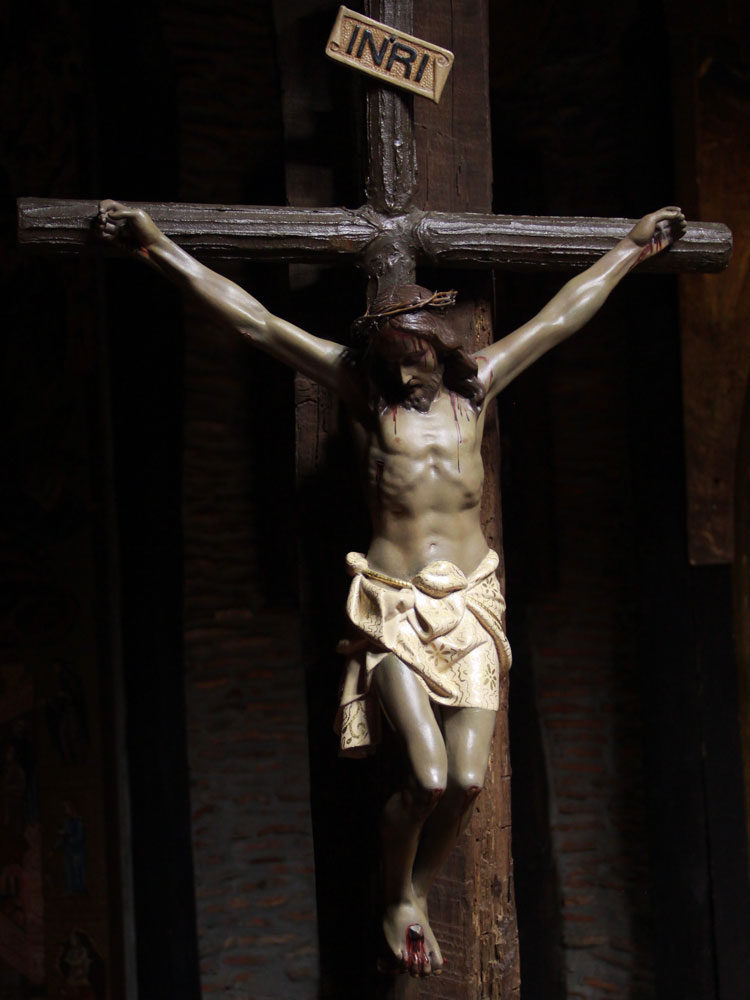
It is worth looking at Sister Clare’s own description of her conversion in order to get a better sense of the grace that God worked in her:
“It was Good Friday. I attended the liturgy that day with a completely passive attitude. When it was time for everyone to get in line and go up the main aisle of the church for the adoration of the Cross, I saw how some made a genuflection and then kissed Jesus’ feet nailed to the Cross. That was the first time I had seen something like that. I also got in line, not out of piety or fervor. I only did so because it was what everyone was doing at that moment. When it was my turn, I got on my knees and kissed Jesus’ feet. That simple gesture lasted no more than ten seconds. Kissing the Cross, something that apparently seemed so trivial, had a very strong impact on me. Tertullian wrote that ‘there is absolutely nothing which makes men’s minds more perplexed about the divine works than the disproportion between the simplicity of the means employed and the grandeur of the effect obtained.’ I’m not sure how to explain exactly what happened. I didn’t see a choir of angels or a white dove flying down toward me, but I experienced the certainty that the Lord was on the Cross for me, and along with that certainty, I felt a burning pain, similar to what I had experienced when I was little during the Way of the Cross [when she was moved to see how much Jesus had suffered on the Cross, but without knowing Who Jesus was]. Going back to the pew, I had a deep impression in me that I hadn’t felt before. I had to do something for Him who had given His life for me.”
After an initial struggle lasting a little over a year, Sister Clare did give her life completely to Him. She became a wonder of grace and mercy.
A Work Continued in Heaven
In the Epilogue of Alone with Christ Alone, Sr Kristen Gardner writes:
Shortly before her death, a young woman shared with Sr. Clare her difficulties in living a life of grace and following the Lord.
Sr. Clare confided to her the words that the Lord Himself had spoken to her in a moment of difficulty: “If you can no longer walk, I will carry you on my shoulders. But do not leave Me.” She turned to this young woman and exclaimed, “If you can no longer walk, I, Sr. Clare, will carry you on my shoulders. But do not leave the Lord. Do not leave Him!”Perhaps Sr. Clare wants to direct these same words to all of us. In fact, people of all states of life, from all over the world, contact us, affirming that Sr. Clare has helped them in their spiritual lives. Desperate souls at the border of suicide receive hope. University students lost in a life of vice are given strength to turn back to the Lord. Lukewarm Catholics recover a desire to be holy and love God with all their hearts. Young men are inspired to give their lives to the Lord and enter the seminary. Young women decide to dedicate their lives to God in various religious institutions. Countless seminarians and religious have told us that Sr. Clare has saved their vocations, right when they thought they had no other choice than to turn their backs on God.
How can the “yes” of just one woman bring about so many spiritual fruits? The phone continues to ring and emails continue to arrive sharing graces received. It seems almost disproportionate! And yet, we must remember that Our Lord calls each and every one of us to be holy, to participate in His redemption, and to contribute to the salvation of many souls. We may not all have artistic talents. We may not all be as funny and outgoing as she. And yet, if we allow Him to enter our lives, if we seek Him and love Him, if we surrender ourselves to Him without reserve and fight for holiness despite our weaknesses, He will transform us. He will love in and through us, bring us to Himself, and bring lost sheep to His fold through us, just like Sr. Clare.
An Interest in Liver Problems?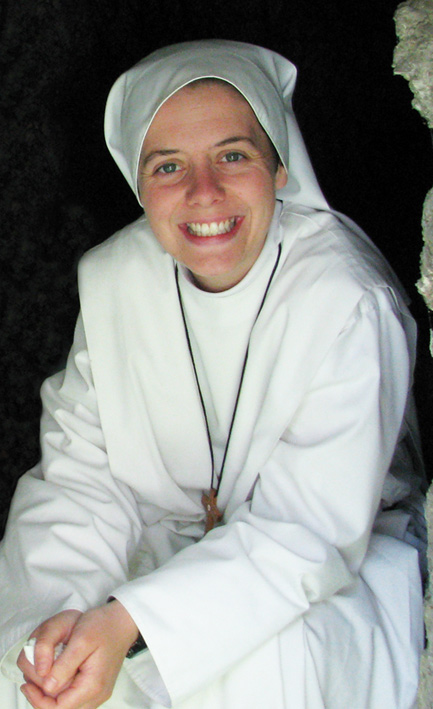
We would echo these words. The connections and graces we have received here will probably never be adequately chronicled. We have also seen graces in the lives of those who visit the monastery, such as a transformation from sadness to joy, a new zeal, or a new depth of love for God.
There are also more remarkable graces. Last week a friend of the monastery who had recently been diagnosed with liver disease after tests that had been taking place for a few months reported that after she was interiorly moved to pray to Sister Clare for healing (despite not having much of a devotion to her), she felt an instant change, and preliminary tests with positive results and continues to invoke Sr Clare as the treatment progresses. She mentioned that, while researching this, she discovered that a year previously another woman had apparently been healed from liver failure. She wondered why Sister Clare seemed so interested in those that suffer from liver disease.
The monks discussed this at recreation, and one monk suggested it was because Sister Clare had experienced the effects of alcoholism on those around her. Alcoholism, of course, causes liver problems, and so the connection would be logical. Could it be that she suffered secretly in her heart from this more than she revealed? Our heavenly friends tend to have a special interest in those areas where our pain reminds them of those glorious pains which, by suffering for love, gained for them an eternity in which to love Jesus and to make Him loved. And may God grant this grace of making Jesus loved to Sister Clare, now and for a long time to come.

